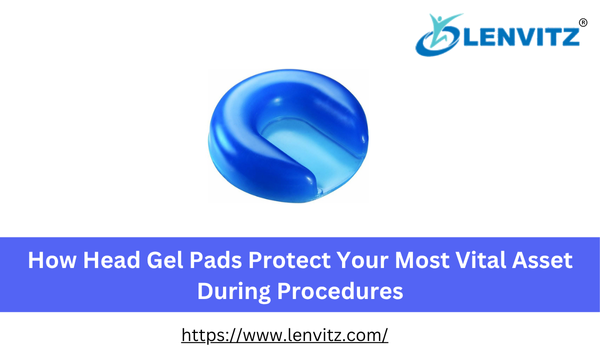
When you think about patient safety during surgery or intensive care, you likely think about heart monitors and breathing machines. However, one of the most vital, yet often overlooked, pieces of equipment is the specialized support used to protect the head and neck. Tools like the Head Gel Pad, silicon head ring, and prone head rest are critical components of care, designed to stabilize the head and prevent catastrophic pressure and nerve injuries.
The Unique Vulnerability of the Head and Neck
The skull has many bony prominences (like the occipital bone at the back of the head and delicate facial structures) with little soft tissue to cushion them. When a patient is unconscious or immobilized, the sustained pressure on these points against a hard table surface can quickly lead to:
Pressure Ulcers: Rapid tissue breakdown due to restricted blood flow.
Alopecia: Hair loss caused by friction or pressure on the scalp.
Ocular Injury: Potential damage to the eyes, especially in the prone position.
Nerve Damage: Injury to facial or cervical nerves.
Essential Stabilization with the Silicon Head Ring
The head ring is one of the most fundamental devices for protecting the head during surgery. Typically made from medical-grade silicon head ring material, it is designed to cradle the skull.
Supine Protection
When the patient is lying face up (supine), the silicon head ring ensures that the weight of the head is distributed evenly around the circumference, not concentrated on a single point on the back of the skull. This technique prevents pressure from the skull base, maintains a neutral alignment of the cervical spine, and significantly reduces the risk of pressure injury.
Facing Down Safely with the Prone Head Rest
For back, spine, or posterior surgical approaches, the patient is placed in the prone position (face down). This posture demands a specialized approach to protect the face and maintain an open airway.
The Prone Head Rest Solution: This device is engineered to support the head while leaving the eyes and mouth free. The patient’s face rests comfortably on the soft edges of the prone head rest, ensuring that no pressure is exerted on the eyeballs—a critical safeguard against vision loss.
Airway Management: The design also facilitates access for anesthesia and helps to maintain the correct neck position, crucial for preventing kinking of the airway tube.
The combination of the cushioning Head Gel Pad foundation and the specialized support of the silicon head ring and prone head rest are non-negotiable standards, ensuring that a patient’s journey to wellness is not complicated by preventable injury.


